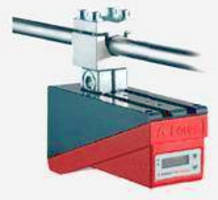Vision and Imaging Sensors / Detectors
Light Section Sensors enhance applications via extended range.
Press Release Summary:

Used to detect profile, dimensions, and presence, sensors have measurement range of up to 800 mm that broadens application fields. Line Profile Sensor, used whenever sizes and positions of stationary or moving objects are to be measured, offers additional encoder connection that permits creation of 3D data when scanning moving objects. Line Range Sensors perform proximity object detection along laser line, and Line Edge Sensors determine position of objects via their edges.
Original Press Release:
Light Section Sensors - LPS/LRS/LES
Leuze's new line of light section sensors provide a cost-effective solution to detect an object's profile, dimensions and presence.
Our new light section sensors can be applied wherever large objects need to be detected reliably, quickly and accurately across longer distances but without extremely high requirements when it comes to precision.
The large measurement range of up to 800 mm opens up completely new application fields using proven light section sensor technology. The new light section sensors take over where, for lack of alternatives, oversized and cumbersome sensor solutions have been used up to now.
The Line Profile Sensor (LPS) is used whenever sizes and positions of stationary or moving objects are to be measured. An additional encoder connection permits the creation of 3D data when scanning moving objects. This opens up a large range of application possibililties in position, contour and volume measurement.
The Line Range Sensors (LRS) are designed to perform proximity object detection along the laser line. Similar to a light barrier or a laser scanner, the sensor detects the presence of objects through scanning. With individual configuration, one sensor can be used to detect single or multiple objects.
The Line Edge Sensors (LES) determine the position of objects via their edges. By detecting height differences the sensor calculates and delivers accurate object positions. That way heights and widths or positions are reliably provided as data for further processing. At the same time one or more edge positions can be output via the individual configuration.




